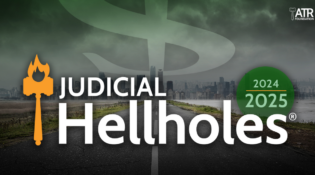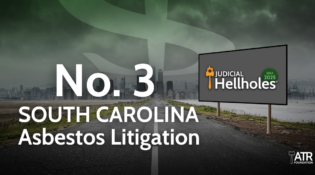Don’t Believe the Liars Who Say Asbestos Trust Fund Transparency Laws Will Hurt Sickened Claimants
A new paper by two Philadelphia defense attorneys with extensive experience in asbestos litigation thoroughly debunks six lies regularly told by plaintiffs’ lawyers and the politicians they support with respect to state and federal legislation aimed at reducing fraud on both our courts and the asbestos bankruptcy trust funds.
Published last week by LexisNexis and Mealey’s, Uncloaking Bankruptcy Trust Filings in Asbestos Litigation: Refuting the Myths about Transparency was written by John J. Hare and Daniel J. Ryan of Marshall Dennehey Warner Coleman & Goggin and begins with discussion of “the routine practice by which asbestos plaintiffs’ lawyers pursue compensation from two sources—bankruptcy trusts and tort litigation—for the same asbestos related injury.”
This practice came under new scrutiny during the bankruptcy proceeding of gasket and packing manufacturer Garlock Sealing Technologies, LLC. In Garlock, U.S. Bankruptcy Judge George Hodges of the Western District of North Carolina found that ‘[t]he withholding of exposure evidence by plaintiffs and their lawyers was significant and had the effect of unfairly inflating the recoveries against Garlock….’ Judge Hodges’ findings and the publicity surrounding his landmark decision have fueled legislative and judicial reforms that seek to bring about greater transparency with regard to asbestos bankruptcy trust claims. At the state level, these reforms generally provide a mechanism to require plaintiffs to file asbestos trust claims before trial so that trust-related exposures can be accounted for in the tort system. These reforms help ensure that juries can render more informed decisions about the causes of a plaintiff’s alleged harm and apportion fault accordingly. Indeed, laws to bring about greater transparency with respect to asbestos trust claims in the tort system were enacted in 2016 in Utah and Tennessee, in 2015 in Texas, Arizona, and West Virginia, in 2014 in Wisconsin, in 2013 in Oklahoma, and 2012 in Ohio. Plaintiffs’ attorneys and their allies have opposed, and continue to oppose, these reform efforts. Before Judge Hodges’ findings, they flatly denied that any problems existed. After Judge Hodges’ findings – and subsequent reports providing additional examples of the need for transparency – the plaintiffs’ bar was forced to change its approach. Plaintiffs’ attorneys have now moved from the macro approach of bold denials to more nuanced and politically-sensitive attacks on proposed reforms. This article surveys the new attacks and reveals that they are in fact myths, more sophisticated but no more credible than the previous denials that any problem exists.
The 10-page paper goes on crush with facts six intentionally misleading arguments by those defending the fraudulent asbestos status quo. They include:
- MYTH #1 – Transparency Reforms Harm Veterans
- MYTH #2 – Transparency Reforms Increase Costs And Delay Compensation
- MYTH #3 – Transparency Reforms ‘Close The Courthouse Doors’ To Plaintiffs
- MYTH #4 – Trust Recoveries Are De Minimis
- MYTH #5 – Transparency Reforms Allow Defendants To Control Plaintiffs’ Tort Suits
- MYTH #6 – Transparency Reforms Threaten Personal Privacy
The bottom line is that new arguments attempting to depict transparency reform as an enemy of veterans and other sympathetic individuals suffering from asbestos disease simply hold no water. The truth, the paper’s authors make clear, “is that the reforms operate in both intent and practice to expedite the payment of compensation to those who file trust claims, to preserve the resources of both trusts and tort defendants, and to ensure that juries know and account for plaintiffs’ entire exposure histories so that defendants pay only their fair share of compensation, all without causing any discernible delay of the tort process. Given these laudable goals, transparency reforms can be resisted only by those who seek to benefit from the very abuses that spurred the reforms in the first place.”






